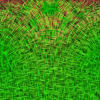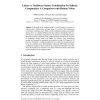528 search results - page 57 / 106 » Summarizing visual data using bidirectional similarity |
BMCBI
2008
13 years 9 months ago
2008
Background: Molecular typing methods are commonly used to study genetic relationships among bacterial isolates. Many of these methods have become standardized and produce portable...
VIS
2004
IEEE
14 years 10 months ago
2004
IEEE
The physical interpretation of mathematical features of tensor fields is highly application-specific. Existing visualization methods for tensor fields only cover a fraction of the...
AVI
2004
13 years 10 months ago
2004
Visualization interfaces that offer multiple coordinated views on a particular set of data items are useful for navigating and exploring complex information spaces. In this paper ...
NAR
2006
13 years 9 months ago
2006
The Yeast Gene Order Browser (YGOB) is an online tool designed to facilitate the comparative genomic visualization and appraisal of synteny within and between the genomes of seven...
DAGM
2006
Springer
14 years 23 days ago
2006
Springer
In the heart of the computer model of visual attention, an interest or saliency map is derived from an input image in a process that encompasses several data combination steps. Whi...


